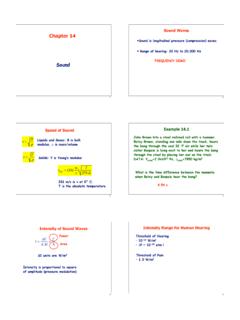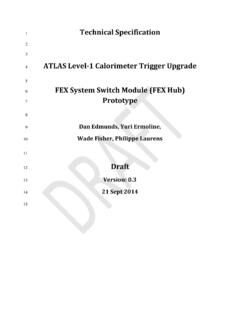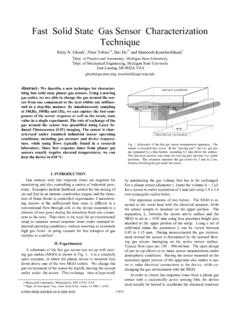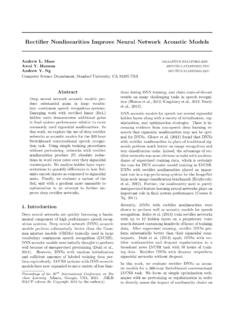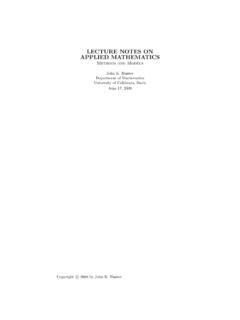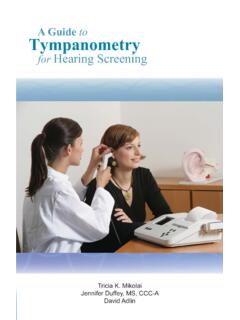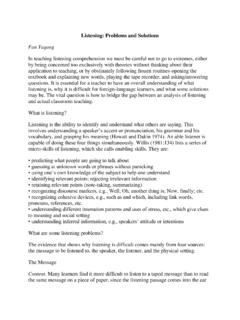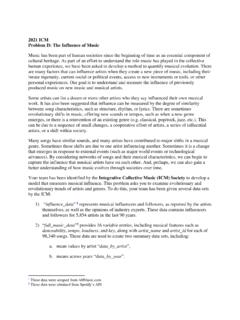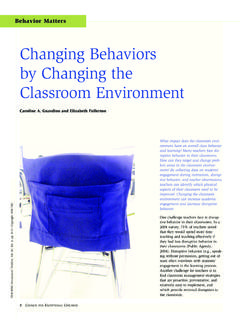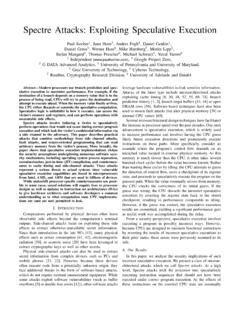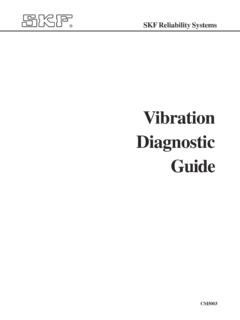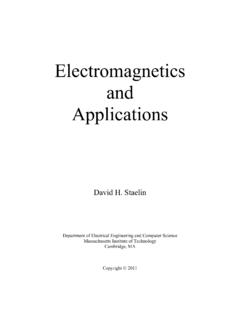Transcription of Solutions to problems for Part 2 - Michigan State University
1 1 Solutions to problems for Part 2 Sample Quiz ProblemsQuiz problem 1. Write down the equation for the thermal de Broglie wavelength. Explain its importance in thestudy of classical and quantum =h 2 mkBT(1)This is of the formh/pT, wherepT= (2 mkBT)1/2is an average thermal momentum. Define the average interparticlespacing of a gasLc= (V/N)1/3. If > Lcquantum effects become important in the thermodynamics. Quiz problem 2. Why are the factors 1/N! and 1/h3 Nintroduced into the derivation of the partition function ofthe ideal classical gas?SolutionThe factor 1/N! is needed to account for the fact that when an intergration is carried out over all phase space forNparticles, all permutations of the particle identities is included.
2 For indentical particles this must be removed. Thefactor 1/h3 Ntakes account of the Heisenberg uncertainty principle which states that the smallest phase space volumethat makes sense is ( h/2)3. The fact that it is 1/h3instead of 1/( h/2)3for each particle is to reproduce the hightemperature behavior of quantum gases. Quiz problem 3. Explain why the heat capacity at constant volume of a nitrogen molecule is roughly room temperature. What are the expressions for the heat capacity at constant pressure for thesetwo cases?SolutionAt low temperatures only the translational degrees of freedom are active so we havekBT/2 of energy for eachof three degrees of freedom.
3 The specific heat is then 3kBTN/2. Once the temperature is larger than the spacingbetween rotational energy levels h2/2 IwhereIis the moment of inertia, then the rotational degrees of freedom arealso active as we get two more degrees of freedom. Only two rotational degrees of freedom contribute as the momentof inertia about the molecule axis is very small, so the level spacing is large and this mode is not active at roomtemperature. The heat capacity at constant pressure isCP=CV+NkBT. Quiz problem 4. In modeling the earth s atmosphere using the equilibrium isothermal model, the gas pressuredecreases exponentially with altitude. Explain how this is reconciled with the equilibrium condition of constantpressure found in our discussion of thermodynamics in Part 1 of the condition that the pressure of a thermodynamic system such as a gas must be a constant applies when thereare no externally applied potentials in the system.
4 An external potential such as a gravitational field or a harmonictrapping potential as occurs in atom traps leads to a force and this force is balanced by a pressure gradient in thegas. This leads to the condition of hydrostatic equilibrium like that as used in the analysis earth s atmosphere. 2 Quiz problem the assumptions used in the isothermal and adiabatic models of the isothermal model assumes that the atmostphere is at constant temperature which requires that thermal equi-librium has been established in all regions of the atmosphere. The adiabatic model assumes that no heat flow occursin the gas and is justified by the argument that the thermal conductivity of air is very low.
5 These models are clearlylimiting cases with the truth being somewhere between the two. Surprisingly the adiabatic model seems to fit thebehavior of the troposphere quite well. Quiz problem is the Curie law? Derive this law for the spin half Ising spin half Ising paramagnet has Hamiltonian,H= sh iSi(2)whereSi= 1. The partition function and magnetization are then,ZN= (2cosh( sh))N;m= (ln(ZN)) ( h)=N stanh( sh)(3)The magnetic susceptibility is then, = m h=N 2ssech2( sh)) N 2skBT(4)which shows that in the limith 0, the susceptibility behaves asC/Twhich is the Curie law. Quiz problem and also the Ising model in one dimension exhibit a peak in their specific heat,with the low temperature behavior being an approach to zero exponentially and at high temperature an approach tozero as 1/T2.
6 Why is there a peak in the specific heat in these models. What can t we use the rulekBT/2 per degreeof freedom to find the specific heat?SolutionA peak in the heat capacity usually occurs in systems where there is a gap between the ground State energy andthe first excited State , though this is not the only mechanism for a peak inCV. If the gap is , the the peak inthe specific heat occurs at roughlykBTc , though the precise location depends on the system. The peak occursbecause at the temperature the first excited State begins to be populated leading to a rapid change in the internalenergy with temperature and this leads to an increase in the heat capacity Quiz problem the meaning of negative temperature in the Ising paramagnetic and how it can be usedto make a magnetic cooling temperature occurs when S/ Eis negative.
7 For the Ising paramagnet this condition appliesin the energy regimeE >0 as the peak in the many body density of states is atE= 0. Magnetic cooling canbe produced by preparing a State in a polarized spin configuration followed by removing the field. Once the fieldis removed, the system becomes more disordered and in doing so absorbs heat from its surroundings. This leads tocooling, just as gas cooling is produced when a gas expands as in conventional gas cycle refridgeration. 3 Quiz problem is the meaning of the terms spontaneous symmetry breaking (or spontaneous magne-tization) and breaking of ergodicity in the context of the two dimensional Ising a ferromagnet there are two ground states: all up spins; or all down spins.
8 At low temperatures, thesetwo states are separated by a large energy barrier that is impossible to overcome at zero applied field. This systemis non-ergodic as phase space is separated into to regions that are not connnected by any trajectories. Spontaneoussymmetry breaking refers to the fact that the system chooses between to states (either all up or all down) and so theup down symmetry of the system is broken without the application of a symmetry breaking field. Quiz problem 10. State and give a physical explanation of the behavior of the chemical potential and thefugacityz=e as temperatureT 0, for both the non-relativistic and ultra-relativistic Bose the Bose gas as temperature goes to zero, the internal energy contribution dominates.
9 As temperature goes tozero all of the particles that are added go into the ground State , so the chemical potential goes to the ground stateenergy. For the ideal gas case the ground State energy is zero, so the chemical potential goes to zero. The fugacitytherefore goes to one. This is true for both non-relativistic and ultra-relativistic gases. In the Bose condensed phasethe fugacity remains at one up to the BEC critical temperature. Quiz problem 11. Write down the starting expression in the derivation of the grand partition function, Bforthe ideal Bose gas, for a general set of energy levels l, with degeneracygl. Carry out the sums over the energy leveloccupancies,nland hence write down an expression forln( B).
10 SolutionFor the case of Bose statistics the possibilities arenl= 0,1, so we find B= l( nle ( l )nl)gl=M l=1(11 e ( l ))gl=M l=1(11 ze l)gl(5)where the sums are carried out by using the formula for a geometric progression. We thus find,ln( B) = M l=1glln(1 ze l)(6)< nl>= 1 l[ln( B)] =ze l1 ze l(7) Quiz problem 12. In the condensed phase, superfluids are often described in terms of a two fluid model. Basedon the analysis of the ideal Bose gas, explain the physical basis of the two fluid two fluid model considers that the Bose condensed phase is a superfluid while the particles in the excited statesbehave as a normal fluid. The normal fluid exhibits dissipation and viscosity, while the superfluid has very low valuesof viscosity and other remarkable properties such as phase problem 13.

